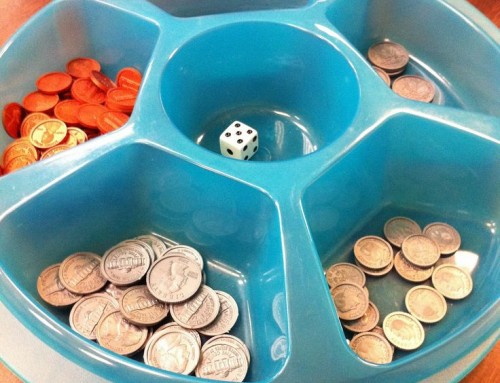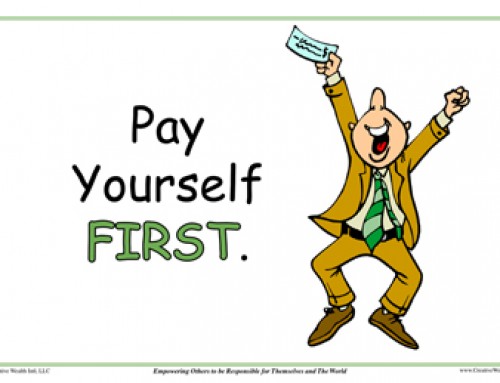How would you like to ensure that your students remembered what you were teaching them? Thank you. And what if I could teach you an easy-to-use teaching technique to make that happen…would you want to learn it? Great. We’re going to talk about that in just a bit. But let’s talk about learning in general first
In order for anyone to learn anything, two things have to exist.
- The person has to be engaged in the learning experience. In other words, you’ve answered their, “What’s in it for me?” question so they are actively looking for value from you.
- The information must be taught in a way that is ‘sticky.’ In other words, the learning environment and the teaching method must be designed to help the student remember and easily integrate the information.
There are many techniques you can use to engage your audient. One way is to use the powerful teaching technique often referred to as ‘enrolling question’ (I used them in the first paragraph of this article). We’ll talk more about Enrolling Questions in another article.
In this article, however, you’re going to learn one of the many ways you can make the information sticky. In this article, I’m going to teach you how to use a CALL-BACK. A what? You probably, in your head or aloud, said the word ‘call back’ after I asked, “A what?” This is the probably the easiest way to illustrate a call back!
You see, it’s one thing if I say something…it’s totally another when YOU say it. When I say it, it’s MY opinion, idea or thought. When YOU say it, however, it starts a process in YOUR brain that creates a link or anchor to the word or phrase you want your students to remember.
Some keys to using call-backs effectively:
1) Only ask them to call back, or repeat, one word or very short phrases. For example, “Today, we’re going to learn how to make chewy cookies. What kind of cookies?” And they will say, “chewy”. Or you could say, “What are we going to learn how to make?” and they would repeat, “chewy cookies.”
2) Don’t ask them to call back words that have no significance. It’s the key words, phrases and information you want them to say aloud in order to begin locking it into their brains.
3) Vary the way you ask them to repeat stuff. Repeat what? Stuff! J
Here are a few ways you can elicit a call back:
- Say it with me. As in, “Today we’re going to learn out A, B, C’s. Say those letters with me.”
- What is it? As in, “It’s a carrot. What is it?”
- How many. As in, “If you’re going to make an omelets, first you have to scramble the eggs for three minutes. How many minutes?”
As you listen to the Money Game Instructional videos, you’ll hear me use call-backs in all sorts of ways. The more you use them, the easier it gets.
Call Back Learning Process
In order to learn to use call-backs, you have to PRACTICE using them. Here is a fun way to learn to use them:
Get two other people who are also teachers or friends who want to learn something cool and help you out with this activity. The following instructions apply to all three of you.
First, choose a topic that you know a lot about…something that you could teach someone; something you’re an expert at. It can be making chocolate chip cookies, changing the oil in a car or painting a fence. It really doesn’t matter what it is. Just make it something you know well enough to be able to instruct someone else in.
Next, choose who is going first (I usually suggest that person who doesn’t want to go first, goes first!).
Now, all three of you stand (always practice your teaching techniques standing up) so that the two who aren’t going are facing and making a small audience for the person who is going first.
Finally, spend 1 minute each teaching the other two how to do whatever it was you choose, using as many call backs as possible.
As our example, I’m going to teach you how to make my famous gluten-free peanut butter chocolate chip cookies.
“OK, to make my famous peanut butter, chocolate chip cookies, first you need to preheat the over to 375 degrees. How many degrees? (375). Good. Next, you’ll want to get all of the ingredients together in one place and get yourself a big glass bowl. What kind of a bowl (big, glass bown). Take two each, How many eggs? (2)…etc.
You get the idea.
Using call backs when you’re teaching The Money Game, or anything else for that matter, makes the information sticky for the students and makes the whole learning experience more fun for everyone.
Some people find doing call-backs easy. Others find that with just a little bit of practice, they’re using call-backs like a pro. Once you get them down, you’ll be able to switch between just talking with friends, and using call-backs with your children or students, in a heart beat.
Bonus Tip: Using call backs works great for your own kids, and, believe it or not, your spouse!
Enjoy. More teaching tips to come…and look for videos very soon.





Leave A Comment